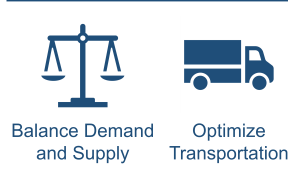15.1 Introduction
As we transition from the transportation-focused discussions of Chapter 14, it becomes clear that warehousing is an equally crucial component in the domain of logistics management. Serving as a pivotal junction between the production and ultimate consumption of goods, warehousing extends beyond mere storage; it is an integral element in the seamless orchestration of the supply chain.
The strategic importance of warehousing in logistics is multifaceted. Warehouses perform essential functions that contribute significantly to the efficiency and effectiveness of the overall supply chain:

- Balancing Demand and Supply: One of the primary roles of warehousing is to reconcile discrepancies between production schedules and market demand. This function is particularly critical for products with seasonal production patterns or fluctuating demand. For instance, warehouses enable the storage of agricultural produce harvested in a particular season to ensure its availability throughout the year, or they can stockpile products like seasonal clothing to meet specific demand peaks.
- Optimizing Transportation: As discussed in Chapter 14, transportation is a major component of logistics that involves significant costs and operational planning. Warehousing contributes to transportation efficiency by enabling the consolidation of goods, thus ensuring that transportation resources are utilized optimally. This includes the aggregation of products to achieve full truckload shipments, reducing per-unit transport costs and improving delivery timelines.
In addition to these fundamental roles, modern warehouses are increasingly taking on more dynamic and complex functions in the supply chain. They act as critical nodes for quality control, where products are inspected and vetted before being forwarded to the next supply chain stage. Moreover, with the rise of e-commerce and the growing importance of reverse logistics, warehouses are evolving into hubs for processing returns, undertaking tasks such as inspection, repackaging, refurbishing, or redirecting returned goods.
In this chapter, we will navigate through the various dimensions of warehousing, starting with strategic warehouse network planning. This involves aligning warehouse locations and functionalities with the overarching objectives of the supply chain for maximum efficacy. We’ll also delve into the tactical aspects, such as the warehouse types and their specific roles. Progressing to operational considerations, our focus will shift to the internal processes of warehousing, current technological advancements enhancing these operations, and the critical role of logistics partners. This exploration is designed to demonstrate how warehousing, while distinct in function, is deeply integrated with the overall purpose and efficiency of the supply chain.
